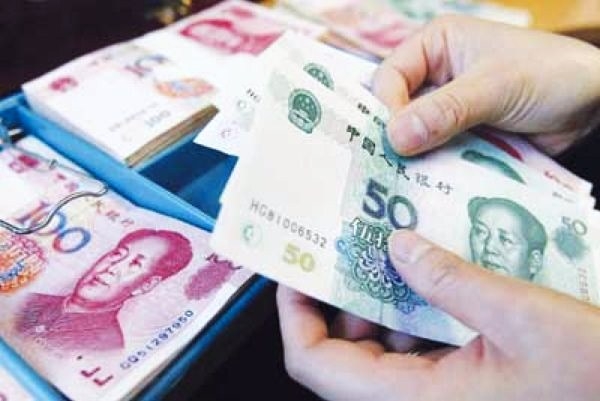
China exports down 4.9% in April
The decrease is due to the continuing European crisis and slow shipment to the G3 market.
According to HSBC Global Research, the sharp slowdown of export growth underlines strong external headwinds, while the steep deceleration of import growth signals sustained weakness of domestic investment demand. With external challenges persisting, Beijing needs to boost domestic demand and stabilize investment growth. Provided inflation pressures remain contained, we expect Beijing to step up easing measures in the coming months, including additional quantitative monetary easing via open market operation and a RRR cut in the coming weeks, if not days.
Here's more from HSBC Global Research:
Both April's export and import growth came in much lower than market expectation, resulting in a higher-than-expected trade surplus.
April's export growth decelerated sharply to 4.9% y-o-y from 8.9% y-o-y in March, even lower than our below-consensus expectations. Seasonally adjusted, exports contracted by 1.5% m-o-m in April, down from 34.3% m-o-m reported in March.
The breakdown of exports suggested that European crisis continued to bite and shipments to non-G3 markets decelerated sharply to 5.6% y-o-y in April (from 12.2% in March, and slashed 3.7ppts to total exports growth).
By destination, exports to Europe (China's largest export market), again, contracted by 2.4% y-o-y in April compared to a fall of 3.1% y-o-y in March. Shipments to US cooled to 10% y-o-y in April, following the rebound of 14% y-o-y in March. In contrast, shipments to Japan rebounded to 5.4% y-o-y in April compared to 3.4% y-o-y in March. Taken together, exports to the G3 markets slowed to 3.9% y-o-y in April, compared to 4.7% y-o-y in March (6.0% y-o-y in 1Q).
By product, the slowdown in exports was broad-based. But shipments of electronic and machinery products, which accounted for approximately 60% of total exports for the first quarter, continued to outperform (6.9% y-o-y in April vs. 9.5% in March). Exports of major labor-intensive products slowed notably following the rebound in March: textiles exports contracted by 4% y-o-y (vs. an increase of 7.7% y-o-y in March); clothing exports contracted by 6.4% y-o-y (vs. an increase of 18.6%y-o-y in March); shoe exports dropped to 8% y-o-y in April (vs. 13.7% y-o-y in March).
April's import growth came in as a huge downside surprise, with y-o-y growth rate almost flat at 0.3% y-o-y in April, compared to 5.3% y-o-y in March and 10.9% y-o-y consensus forecast. This rate was the lowest reading since October 2009 (excluding the months with Chinese New Year distortion). Seasonally adjusted, import growth decreased by 9.7% m-o-m in April, compared to zero growth in March.
Imports volume of major commodities contracted on the month: imports of iron ore contracted by 8.2% m-o-m (vs. 3.2% in March); imports of steel products contracted by 11% m-o-m (vs. 4% increase in March); the contraction of crude oil widened to 5.5% m-o-m (vs. -0.4% in March); so did unwrought copper and aluminum imports (contracted by 18.8% m-o-m and 21.7% m-o-m respectively).
Processing imports recorded a deeper decline of 4.1% y-o-y in April (vs. -0.7% in March), while ordinary imports turned to its first contraction (at. 4% y-o-y in April vs. 5.8% y-o-y in March) since August 2009.
As a result, China's trade surplus jumped to a three month high of USD18.4bn, beating consensus expectation for USD9.9bn and more than three times of March's trade surplus of USD5.3bn.
Implications
April's trade numbers are disappointing. China's exports continue to face strong external headwinds, despite the slight improvement in the earlier manufacturing PMI releases. The continuous slowdown of exports is not a complete surprise, given the lower-than-expected exports data in neighboring economies (such as Korea and Taiwan).
Going forward, external challenges are likely to persist for longer. The developed economies are likely to be disappointing in the coming months. HSBC's US economist expects the US economy to cool off to just 0.7% in 2Q (vs. 2.2% in 1Q), as final demand remains weak (indeed, April's exports to US started to slow). And the Eurozone economy is likely to see the recession worsen. The gloomy outlook for external demand is already signaled by just-concluded spring session of China's Export and Import Fair, which reported the first decline (2.3% y-o-y) decline of turnover value since the global financial crisis.
More worrisome is today's sharp deceleration of import growth, which is mainly led by the contraction of ordinary imports (slashing 5.7ppts to total imports growth by our estimation). As ordinary imports mainly serve domestic demand, this implies that domestic demand is likely to be softer than expected. In particular the sharp slowdown of iron ore and steel products likely reflected the ongoing property-led investment slowdown. April's y-t-d fixed asset investment growth is expected to slow to 20.5%, following the deceleration to 20.9% y-o-y in 1Q from 23.8% last year.
Beijing policy makers need to step up the easing measures to boost domestic demand and counterbalance the prolonged external weakness. To do so, the key is to stabilize investment growth. This can be achieved by accelerating construction of public housing and ongoing key infrastructure projects to offset the private property investment slowdown. In turn, fiscal spending and credit support must increase.
Securing smooth liquidity growth is critical to support investment and GDP growth, with the inflation outlook remaining accommodative. As such, PBoC has already injected RMB430bn (equivalent to one 50bp RRR cut) in open market operation over the past seven weeks in a row, and is likely to continue doing so in the coming weeks. However, OMO capital injection is unlikely to be a substitute to an across-the-board RRR cut. We expect the next RRR cut to be delivered in the coming weeks, if not days.
























 Advertise
Advertise






